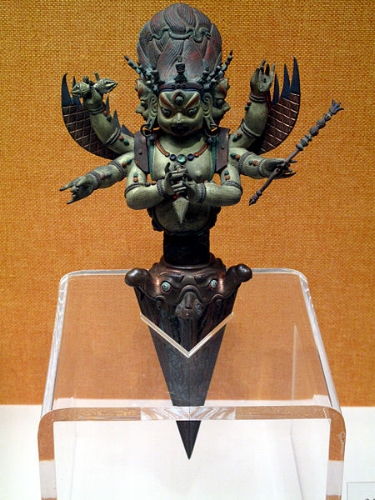Sharing from my 'Cabinet of Curiosities' - Intriguing Snippets
I’m always on the lookout for fascinating snippets of information, which fire the imagination. Here’s a selection:
Photo by Jiyeon Park on Unsplash
In Numerology and Gematria (an Assyro-Babylonian-Greek system of alphanumeric code, which was later adopted into Jewish culture; it assigns a numerical value to a word, name or phrase), the number ‘9’ is thought to be magical as it has many fascinating calculable properties.
To the ancient Egyptians, the Ennead was the 9 deities worshipped at Heliopolis; the sun god, Atum; his children, Shu and Tefnut; their children, Geb and Nut; and their children, Osiris, Isis, Seth and Nephthys.
In Norse mythology, Odin hangs in the ‘world tree’ for 9 days and 9 nights, learning 9 songs.
In Shakespeare’s ‘Macbeth’, the 3 witches use the Charm of 9, and the ‘ninefold strength’ was a healing ritual widely used in Western Europe.
An especially interesting feature of ‘9’ is that the digits in its multiples always add up to itself – for example: 9 x 2 = 18 (1 + 8=9) etc.
9 dots can be arranged to create a circle, cross, triangle and square.
~~~~~~~~~~~~~~~~~~~~~~~~~~~~~~~~~~~~~~~~~~
In Siberia, it is traditionally believed that our world is one of several worlds, stacked on top of each other, with our world being in the middle. The good spirits dwell in the upper worlds while the lower worlds contain evil spirits.
This belief was, in my opinion, very well depicted in the ‘Watch’ series by Sergei Lukyanenko.
The paths which connect the worlds are usually depicted as the roots and branches of a tree, with the roots in the lower worlds and the branches reaching up into the upper worlds.
Not everyone was able to move between the worlds. Only shamans were trained to, and they could only do so when in a trance. They would climb or fly to the other worlds to negotiate or fight with the spirits.
~~~~~~~~~~~~~~~~~~~~~~~~~~~~~~~~~~~~~~~~~~
Of all the nocturnal beasts that were prevalent in medieval times, it was the wolf that was picked out and marked as a devilish creature even though there is nothing in its nature that is associated with evil. On the contrary, it is a highly intelligent, social animal with strong family ties.
The epitome of its supposed evil was when it was bound to man in the form of the werewolf. Those born with hair, a birthmark or a caul on their heads were believed to be werewolves. Paradoxically, these same people were also supposed to possess magical powers of second sight and metamorphosis.
~~~~~~~~~~~~~~~~~~~~~~~~~~~~~~~~~~~~~~~~~~
The beliefs surrounding mirrors. A person’s reflection in a mirror, or water, was said to be the picture of their soul. Vampires have no reflections because they don’t have souls.
Photo by Cristina Gottardi on Unsplash
When a person dies, the mirrors in the room with the corpse are covered or turned to the wall. It was thought that the mirror might harness the spirit of death and cause anyone who looked into it to die.
A mirror’s supposed ability to capture a reflected soul probably led to the belief that breaking a mirror would lead to 7 years’ bad luck. Apparently, it took 7 years for that person to regain their shattered spirit, and in those 7 years, they would be rendered soulless.
~~~~~~~~~~~~~~~~~~~~~~~~~~~~~~~~~~~~~~~~~~
In Tibet, we find Vajrakilaya or Vajrakila, the wrathful deity, or ‘heruka’, who embodies what is called the enlightened activity of the buddhas; which basically means the activity of the buddhas for the welfare of beings. This deity is the most powerful for spiritually removing obstacles, destroying and then purifying negative energy.
The deity is embodied in what is called a ‘kīla’ (Sanskrit) or ‘phurba’ (Tibetan), which is either a dagger-like implement or a three-sided peg. He is often shown embracing his consort, Diptachakra.
'Vajrakila', Lama Temple, Beijing
"...the dagger's pointed blade forms the lower body of Vajrakila, a god who is the personification of the dagger. The figure's paired wings, six arms, and three heads are standard iconography for this deity."
Only those initiated in the use of the ‘kīla’ may wield it for its energy is fierce. Having said that, it isn’t a physical weapon but a spiritual one.
One of the primary ways of using it is to pierce the earth with it, which stabilises the prayer ground during ceremonies.
Because of its piercing and transfixing qualities, the ‘kīla’ is able to pin down negative energies, which it does by tying the energies to the blade before transmuting them with the tip of the blade.
The ‘kīla’ is also used in exorcisms; it holds demons in place so they can be destroyed.
The image of a deity embodied in a dagger sparked this idea, using a similar kind of device – piercing it into the ground at the entrance of a sacred or protected site to create a mystical barrier, preventing evil from crossing over. Haven’t used it in any story… yet.



